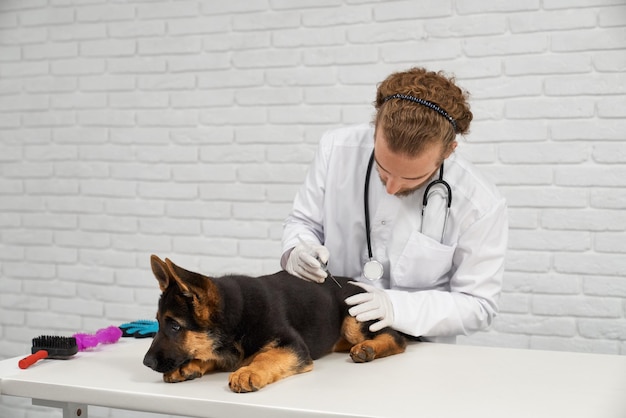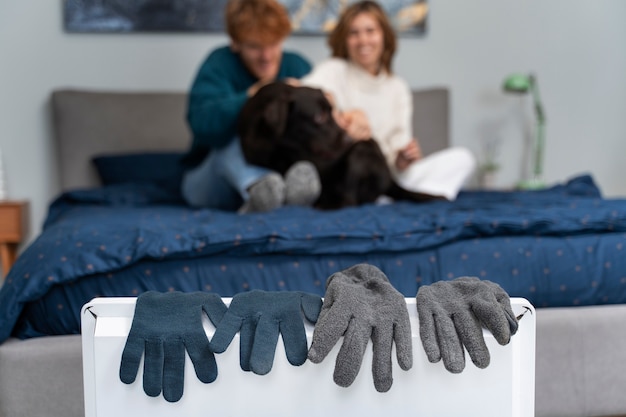Expert Pet Lameness Diagnosis and Treatment at Georgetown Urgent Care

Expert Pet Lameness Diagnosis and Treatment at Georgetown Urgent Care
When your pet suddenly begins limping or refuses to put weight on a leg, it is natural to feel worried and uncertain about what to do next. Lameness in pets can come on quickly and, depending on the cause, may range from mild discomfort to a sign of a serious underlying issue. At VetCheck Pet Urgent Care Center - Georgetown, we understand how distressing it can be to see your furry companion in pain. Our team is dedicated to providing rapid, compassionate pet lameness diagnosis and urgent care services right here at 5731 Williams Drive Suite B105, Georgetown, TX 78633.
Whether your regular veterinarian is unavailable or you need immediate answers, our urgent pet care in Georgetown is designed for fast relief without the wait. Walk-ins are always welcome, and no appointment is needed for our lameness evaluations, so you can bring your pet in whenever sudden limping or leg pain arises. In this guide, we will help you understand the common signs of lameness, why it happens, how our veterinary team diagnoses and manages these issues, and what you can do at home. You will also learn when it is time to seek professional help from an urgent care vet near you, ensuring your pet gets the attention they need exactly when they need it.
Recognizing Lameness in Pets: When Should You Worry?
Lameness in pets is any abnormality in gait or movement that suggests pain, weakness, or dysfunction in one or more limbs. It can develop suddenly after an injury or appear gradually over time due to chronic conditions. Key symptoms of lameness include limping, reluctance to walk or play, favoring one leg, stiffness after rest, and occasional yelping or vocalization when the affected limb is touched. Some pets may lick or chew at a specific area, and swelling or warmth of a joint or paw can also be present.
Pet owners in Georgetown and surrounding communities may notice their dog hesitating to go up stairs after an active day at the park, or their cat might avoid jumping onto furniture, preferring to stay in lower places. Sometimes, lameness is subtle, such as a slight head bob when walking, while other times it is dramatic, with complete non-use of a limb. If your pet’s lameness is accompanied by severe pain, visible wounds, inability to rise, or sudden collapse, immediate evaluation by an emergency veterinarian near you is critical, as these could be signs of a more serious emergency.
Why Does Lameness Occur? Common Causes in Dogs and Cats
Many factors can contribute to lameness, and understanding why it happens can help you respond appropriately. In younger, active dogs, sprains, strains, or minor soft tissue injuries often occur after energetic play or roughhousing. Older pets are more likely to experience lameness from arthritis or degenerative joint disease, which can flare up during cold, damp weather common to Central Texas. Traumatic injuries, such as fractures, dislocations, or torn ligaments, can happen suddenly and typically result in more pronounced limping, swelling, and pain.
Other causes of pet lameness in Georgetown include puncture wounds from thorns or sharp objects, broken toenails, insect bites, or embedded foreign material in the paw. In cats, abscesses from cat fights and ingrown claws may also cause limping. Some medical issues, such as Lyme disease or immune-mediated joint disorders, can result in shifting leg lameness that comes and goes. Tumors affecting bone or soft tissue, although less common, can be a source of persistent lameness, especially in older pets. Our veterinary professionals are trained to rapidly assess your pet’s unique situation and use the latest in-house diagnostics to pinpoint the underlying issue.
How Our Veterinary Team Diagnoses and Treats Lameness
When you bring your limping pet to VetCheck Pet Urgent Care Center - Georgetown, our urgent care approach focuses on quick comfort and clarity. Our veterinarians start by gathering a thorough history, including when lameness began, any recent injuries, and your pet’s activity level. We perform a careful physical examination, checking for swelling, heat, pain, or visible injuries. Depending on the findings, we may recommend diagnostic tests such as X-rays, which are available onsite for immediate imaging of bones and joints, or bloodwork to rule out infection or tick-borne diseases. Our X-ray services allow us to visualize fractures, dislocations, or signs of arthritis in real time.
Treatment options for lameness depend on the underlying cause. For mild sprains or soft tissue injuries, rest, ice packs, and anti-inflammatory medications may be prescribed to reduce discomfort and promote healing. More serious injuries, such as fractures or torn ligaments, may require splinting, bandaging, pain management, or referral for surgery. If a foreign object is found in the paw, our veterinary team can remove it safely and treat any resulting wounds or infections. Pets with abscesses may need wound care and antibiotics, while those with arthritis benefit from tailored pain control and mobility support.
Throughout the process, our focus is on providing urgent pet care in Georgetown that is both efficient and compassionate. We communicate clearly about your pet’s condition and recovery plan, so you feel supported every step of the way.
Home Care and Prevention: Supporting Your Pet Between Veterinary Visits
After your pet receives care for lameness, following home management instructions is essential for optimal recovery. Steps for supporting your pet at home include restricting activity as directed by your veterinarian, providing a comfortable resting area, and administering medications exactly as prescribed. You may need to use leashes or crates to limit movement, especially for dogs recovering from soft tissue injuries. Preventing re-injury involves gradually reintroducing activity and avoiding rough play until your pet is fully healed.
To help reduce the risk of future lameness, keep your pet at a healthy weight, as extra pounds put added stress on joints. Regular nail trims, routine tick prevention, and inspecting paws after walks can help catch minor issues before they become major problems. For pets with arthritis, using ramps or orthopedic bedding can support joint health and make daily life more comfortable. If you have questions about ongoing care or want to learn more about maintaining your pet’s mobility, our lameness evaluation and treatment services provide expert guidance tailored to your pet’s unique needs.
When to Seek Urgent Veterinary Care for Lameness
While some mild cases of lameness can be monitored at home, there are clear situations where immediate veterinary attention is necessary. Bring your pet to our urgent care center if they are unable to bear weight on a limb, show signs of severe pain or distress, have visible swelling, bleeding, or an open wound, or if lameness does not improve after one or two days of rest. Sudden lameness in puppies, senior pets, or those with underlying medical conditions should be evaluated as soon as possible to rule out serious issues.
We encourage pet owners in Georgetown and surrounding communities to use their best judgment, but never hesitate to seek professional help if you are unsure. Our urgent care vet near you is available during evenings, weekends, and holidays, when many general practices are closed. Walk-ins are always welcome, and our veterinary professionals are ready to provide rapid answers and relief for your pet’s discomfort.
Take Action: Fast, Compassionate Lameness Care in Georgetown
When your beloved companion is limping or showing signs of pain, you want answers and relief as quickly as possible. At VetCheck Pet Urgent Care Center - Georgetown, our mission is to provide expert pet lameness diagnosis and treatment without the wait or worry. With in-house diagnostics, onsite X-rays, and a skilled team of veterinarians, we deliver urgent pet care in Georgetown for all your pet’s mobility concerns.
Remember, walk-ins are always welcome at our 5731 Williams Drive Suite B105, Georgetown, TX 78633, and no appointment is needed. If you notice any signs of lameness, don’t wait—contact our team of veterinary professionals right away at (512) 220-2469 for immediate guidance or come directly to our urgent care center. For more information on our rapid in-house diagnostic services or to learn what to expect during your visit, our website has helpful resources to support you.
Your pet’s comfort, mobility, and happiness are our top priorities. If you are searching for an emergency vet near me who can quickly diagnose and treat lameness, VetCheck Pet Urgent Care Center - Georgetown is here to help every day of the week. Trust us to deliver the urgent pet care in Georgetown your companion deserves, so you can both get back to enjoying walks, playtime, and the special moments that make your bond so rewarding.
This blog is intended for informational purposes only and should not replace professional veterinary evaluation. Always consult a veterinarian for specific health concerns regarding your pet.



















